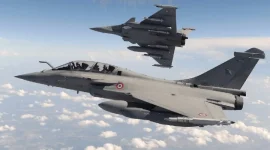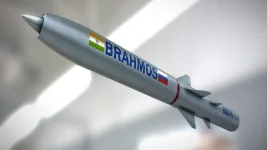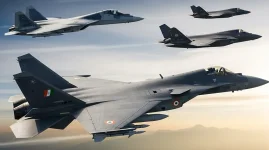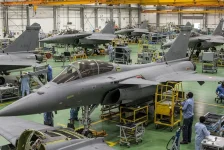The Ministry of Defence (MoD) is set to seek final approval from the Cabinet Committee on Security (CCS) for a significant modernization plan for the Indian Air Force's (IAF) Su-30MKI fleet.
This ambitious mid-life upgrade, known as the "Super Sukhoi" program, will initially involve 84 aircraft.
The project, estimated to cost Rs 65,000 crore, is a critical step to enhance the IAF's combat capability and extend the service life of its primary multirole fighter jet into the 2050s.
This move follows a preliminary approval, or Acceptance of Necessity (AoN), granted by the Defence Acquisition Council (DAC) in November 2023.
The upgrade is considered strategically essential as the IAF's fighter strength has reportedly fallen to approximately 30-31 squadrons, well below the sanctioned 42 squadrons required to manage potential two-front security challenges.
The Super Sukhoi program will serve as a vital bridge, maintaining a modern force structure until indigenous next-generation aircraft, like the Tejas Mk2 and the fifth-generation Advanced Medium Combat Aircraft (AMCA), are fully developed and inducted.
State-owned Hindustan Aeronautics Limited (HAL), the primary contractor for the indigenous production of the Su-30MKI, will spearhead the upgrade.
Contingent on a prompt sanction from the CCS, HAL has proposed a timeline to deliver the first aircraft with Initial Operational Clearance (IOC) within five years. A fully certified Full Operational Clearance (FOC) version is expected within seven years.
This phased approach is designed to modernize the fleet without negatively impacting the IAF's operational strength.
The modernization work will be carried out at HAL's facilities in Nashik and Bengaluru, with prototypes potentially rolling out as early as 2026. The first batch of 84 aircraft is scheduled to begin the upgrade process around 2030.
The program may later be expanded to include nearly 200 jets from the IAF's entire fleet of over 260 Su-30MKIs, ensuring the aircraft remains a potent asset through 2060.
This overhaul will elevate the Su-30MKI to a 4.5+ generation standard, incorporating 51 major system changes.
The centerpiece of the upgrade is the integration of the indigenous Virupaksha Active Electronically Scanned Array (AESA) radar.
Developed by the Defence Research and Development Organisation (DRDO), this advanced Gallium Nitride (GaN) based radar has a significantly longer detection range, reportedly up to 300-400 km, and can track multiple targets simultaneously.
Further enhancements include a completely new avionics suite with an AI-enabled glass cockpit, helmet-mounted displays, and an advanced Infrared Search and Track (IRST) sensor for passive targeting.
The aircraft will also receive a next-generation electronic warfare suite, featuring digital radio frequency memory (DRFM) jammers and towed decoys to counter missile threats.
The project aims for over 80% indigenisation, which will reduce import dependency and expand the aircraft's weapons compatibility to include the BrahMos-NG cruise missile, Rudram anti-radiation missiles, and the indigenous Astra beyond-visual-range (BVR) air-to-air missile.







